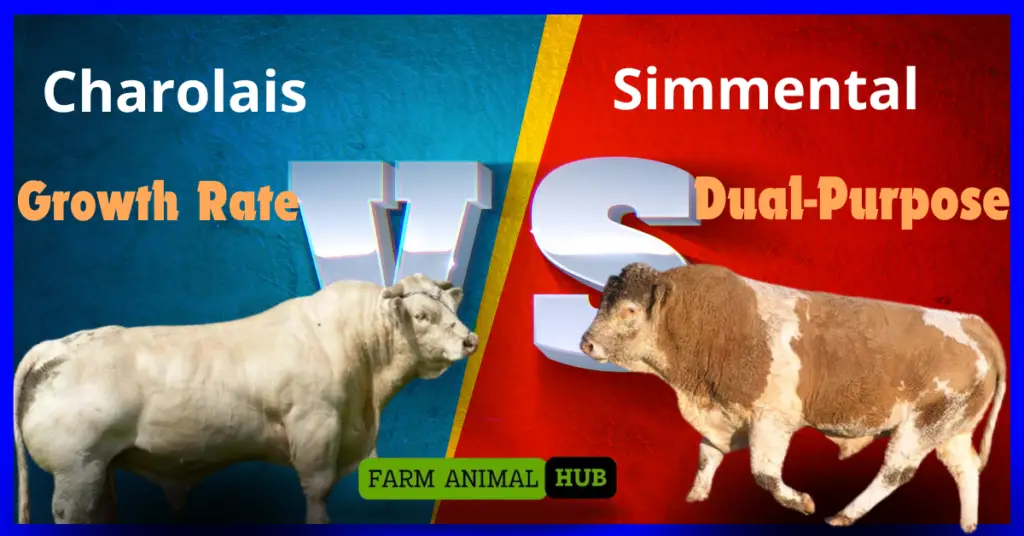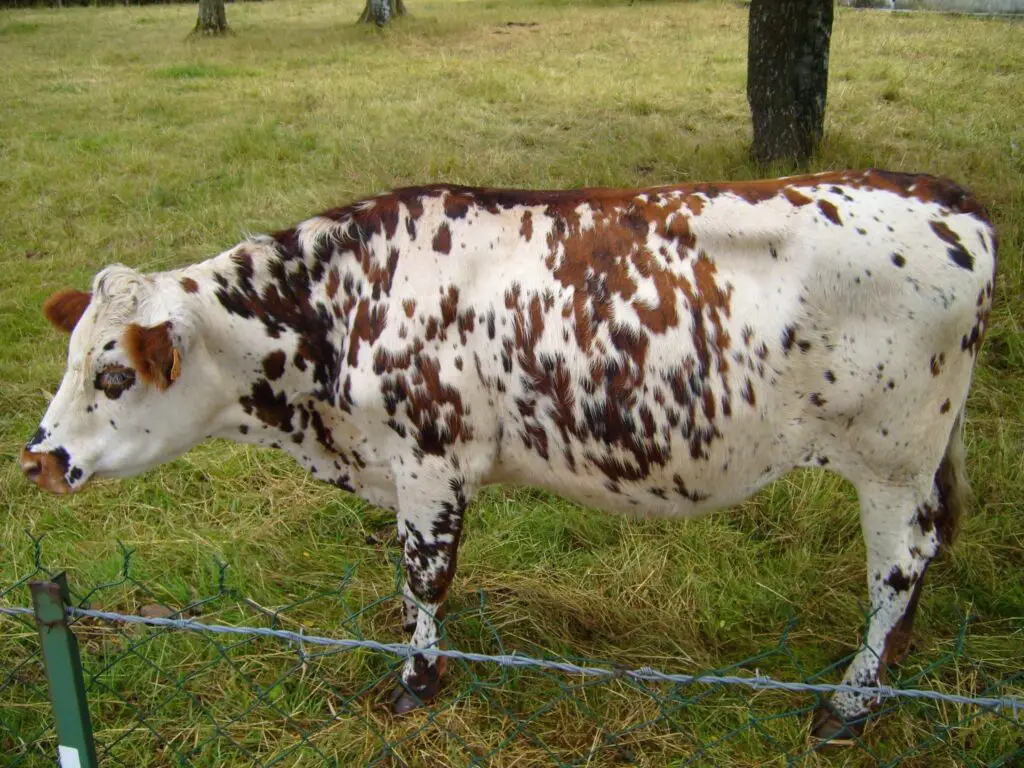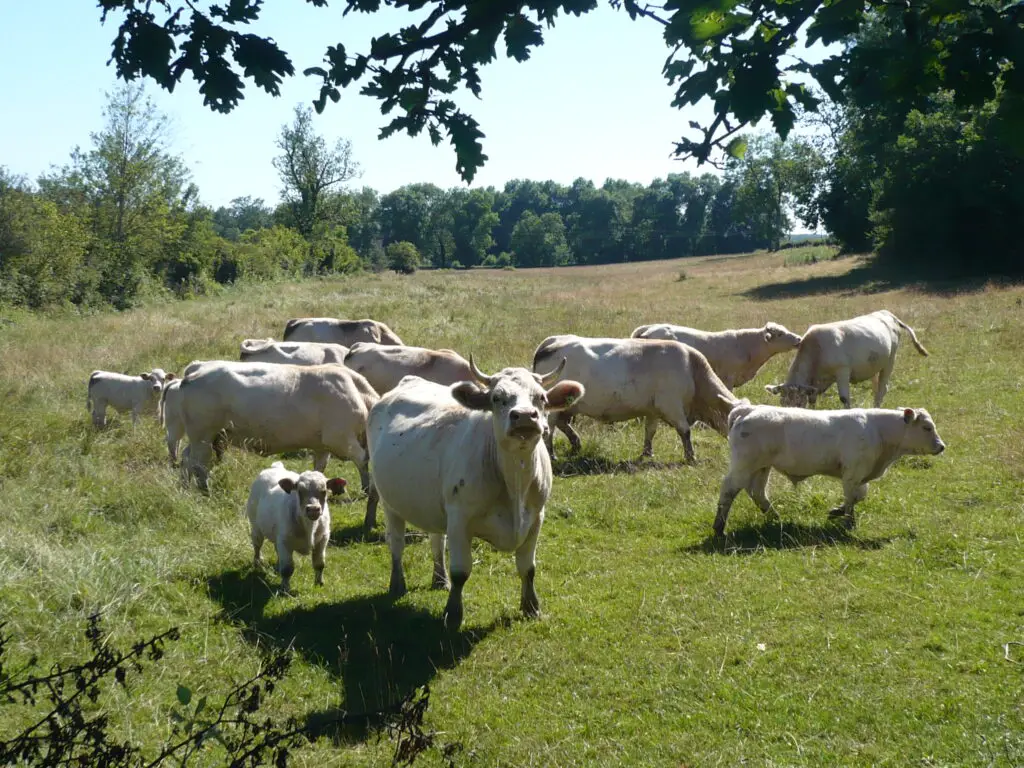
Charolais vs Simmental! Raising cattle isn’t a one-size-fits-all endeavor. Choosing the right breed is crucial, and it often boils down to your specific goals and priorities. Today, we’re diving into the world of two popular beef breeds: the Charolais and the Simmental. Are you looking for rapid growth and impressive carcass yields? Or perhaps a dual-purpose breed that offers both meat and milk production? Let’s break down the pros, cons, and key differences to help you decide which breed is the perfect fit for your farm.
Charolais vs. Simmental Pros
Both Charolais and Simmental cattle bring unique advantages to the table.
Charolais:
- Exceptional Growth Rate: Known for their rapid growth and impressive weight gain, Charolais cattle are a favorite among those looking to maximize meat production in a short timeframe.
- High Carcass Yield: With their muscular build and low fat content, Charolais consistently deliver high-quality carcasses with excellent dressing percentages.
- Feed Efficiency: Charolais are relatively efficient converters of feed into muscle, which can be a significant cost-saving factor.
Simmental:

- Dual-Purpose Versatility: Simmental cattle are a classic dual-purpose breed, offering both milk and meat production. This makes them a valuable asset for diversified farms.
- Good Mothering Ability: Simmental cows are known for their strong maternal instincts and abundant milk production, ensuring healthy and thriving calves.
- Adaptability: Simmental cattle are adaptable to various climates and environments, making them a suitable choice for a wide range of geographical locations.
Charolais vs. Simmental vs. Angus
Let’s throw another popular breed into the mix – the Angus. While not the primary focus of this article, it’s worth considering how these three breeds stack up against each other.
- Charolais: Excel in growth rate and carcass yield but may have slightly lower marbling compared to Angus.
- Simmental: Offer a balance of meat and milk production, with good adaptability but potentially lower meat quality than Angus or Charolais.
- Angus: Renowned for superior marbling and meat quality, but may not grow as quickly as Charolais or produce as much milk as Simmental.
Charolais vs. Simmental Weight
When it comes to weight, Charolais typically outshine Simmental.
- Charolais: Bulls can easily reach weights of 2,500 pounds or more, while cows can weigh between 1,500 and 1,800 pounds.
- Simmental: Bulls typically weigh between 2,200 and 2,500 pounds, while cows range from 1,300 to 1,600 pounds.
Charolais vs. Simmental Size
Size goes hand in hand with weight, but it’s not just about the numbers on the scale.
- Charolais: Large-framed and muscular, with a distinctive white or cream coat.
- Simmental: Also large-framed but slightly less muscular than Charolais, with a reddish-brown coat and white markings.
Charolais vs. Simmental Disadvantages
Every breed has its potential drawbacks.
Charolais:

- Calving Difficulties: Charolais cows may experience calving difficulties, requiring assistance during birth due to their large size.
- Temperament: Some Charolais can be more temperamental than other breeds, requiring careful handling.
Simmental:
- Feed Requirements: Due to their larger size and milk production, Simmental cattle may require more feed than smaller breeds.
- Potential Overgrowth: If not managed properly, Simmental calves can grow too quickly, leading to potential health issues.
Side-by-Side Comparison Table (Charolais vs. Simmental)
| Feature | Charolais | Simmental |
|---|---|---|
| Production Purpose | Primarily beef | Dual-purpose (beef and milk) |
| Meat Quality | Lean, high carcass yield, but potentially lower marbling | Good marbling, but potentially lower carcass yield than Charolais |
| Milk Production | Low | Moderate to high |
| Growth Rate | Very high | High |
| Adaptability | Moderate | High |
| Temperament | Can be temperamental | Generally docile |
| Calving Ease | Can be difficult due to large calf size | Generally easier than Charolais |
| Overall Profitability | High, especially in beef-focused operations | Moderate to high, depending on the balance of meat and milk production |
FAQ
What are the disadvantages of Charolais cattle?
Charolais cattle can sometimes present challenges due to calving difficulties caused by their large calf size. Additionally, some individuals may exhibit a more temperamental disposition, requiring careful handling.
What are the disadvantages of Simmental cattle?
Simmental cattle, being larger and often used for milk production, may have higher feed requirements compared to smaller breeds. Their rapid growth potential can also lead to health issues if not managed properly.
What is the advantage of Simmental cattle?
Simmental cattle are valued for their dual-purpose nature, offering both meat and milk production, making them a versatile asset for farms seeking diversified income streams. They are also adaptable to various climates and known for their good mothering abilities.
What is special aabout Charolais cattle?
Charolais cattle stand out due to their exceptional growth rate and high carcass yield, making them a top choice for beef producers focused on maximizing meat production. Their lean, muscular build and efficient feed conversion further contribute to their appeal.
Conclusion
Choosing between Charolais and Simmental cattle ultimately depends on your individual goals and priorities. If you prioritize rapid growth and exceptional carcass yield for beef production, Charolais might be your ideal choice. However, if you’re seeking a dual-purpose breed that offers both meat and milk while adapting well to various environments, Simmental could be the better fit.
Do you have any experience with Charolais or Simmental cattle? We’d love to hear your thoughts and insights in the comments below! Don’t forget to share this article with fellow cattle enthusiasts who might find it helpful.
